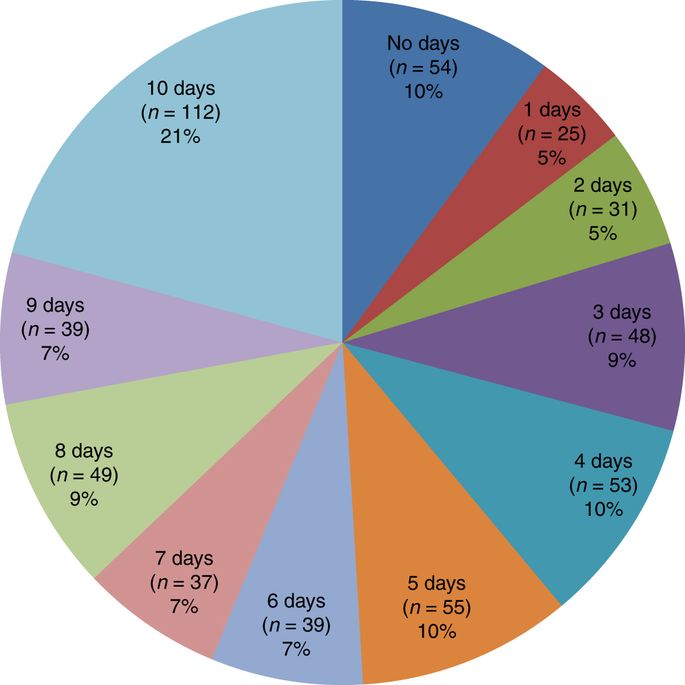The American Journal of Gastroenterology ( IF 8.0 ) Pub Date : 2018-06-08 , DOI: 10.1038/s41395-018-0074-z Imran Aziz , Hans Törnblom , Olafur S Palsson , William E Whitehead , Magnus Simrén

|
Objectives
The diagnostic criteria for irritable bowel syndrome (IBS) have recently been updated from Rome III to Rome IV. Whereas in Rome III a diagnosis of IBS entailed chronic abdominal pain or discomfort at least 3 days per month, in Rome IV the term discomfort has been removed and the frequency of abdominal pain increased to at least 1 day per week. We examined how this change in IBS criteria impacts on clinical characteristics and pathophysiological factors.
Methods
A total of 542 Swedish subjects with Rome III IBS completed a baseline questionnaire enquiring for the number of abdominal pain days in the last 10 days; this was subsequently used as a surrogate marker to identify Rome IV IBS, in that (a) those with 0 or 1 day of pain were classed as Rome IV-negative, and (b) those with ≥2 days of pain were classed as Rome IV-positive. Comparisons were made between Rome IV-positive and -negative IBS groups for demographics, IBS subtype, gastrointestinal and psychological symptoms, somatisation, fatigue, disease-specific quality of life, rectal sensitivity, and oro-anal transit time.
Results
Overall, 85% of Rome III IBS patients fulfilled the Rome IV criteria for IBS, but 15% did not. Rome IV-positive subjects were significantly more likely to be female, have poorer quality of life, greater pain severity, bloating, somatisation, fatigue, and rectal sensitivity than Rome IV-negative subjects. There were no differences in severity of anxiety or depression, IBS subtypes, bowel habit dissatisfaction, or oro-anal transit time. Finally, increasing number of pain days correlated positively with symptoms and visceral hypersensitivity.
Conclusions
Most Rome III-positive IBS patients seeking healthcare fulfil the Rome IV IBS criteria. They constitute a more severe group than those who lose their IBS diagnosis.
中文翻译:

IBS标准从罗马III到罗马IV的变化如何影响临床特征和关键病理生理因素
目标
肠易激综合症(IBS)的诊断标准最近从罗马三世更新到罗马四世。在罗马三世诊断为IBS的患者每月至少需要3天出现慢性腹痛或不适,而在罗马四世,则不再使用术语“不适”,并且腹痛的频率增加到每周至少1天。我们检查了IBS标准的这种变化如何影响临床特征和病理生理因素。
方法
共有542名瑞典的罗马III IBS受试者完成了基线调查表,询问最近10天内的腹痛天数。随后将其用作识别罗马IV IBS的替代标记,因为(a)疼痛0或1天的患者被归类为罗马IV阴性,并且(b)疼痛≥2天的患者被归类为罗马。 IV阳性。在罗马IV阳性和阴性IBS组之间进行了人口统计学,IBS亚型,胃肠道和心理症状,躯体化,疲劳,特定疾病的生活质量,直肠敏感性和口鼻时间的比较。
结果
总体而言,罗马III型IBS患者中有85%符合罗马IV型IBS标准,但15%没有。罗马IV阳性受试者比罗马IV阴性受试者明显更有可能是女性,生活质量较差,疼痛严重程度,腹胀,躯体化,疲劳和直肠敏感性较高。焦虑或抑郁的严重程度,IBS亚型,排便习惯不满意或口-肛门渡过时间没有差异。最后,越来越多的痛苦天数与症状和内脏超敏反应呈正相关。
结论
寻求医疗保健的大多数罗马三世阳性IBS患者均符合罗马四世IBS标准。与失去IBS诊断的患者相比,他们构成的人群更为严重。





















































 京公网安备 11010802027423号
京公网安备 11010802027423号